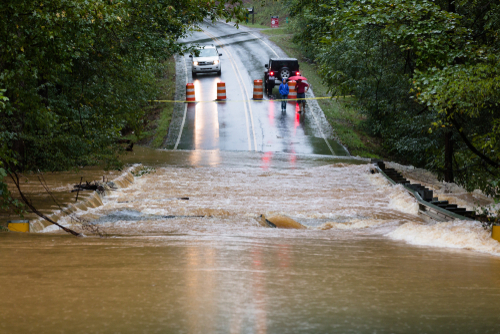Drones are able to be used safely in areas that could be dangerous to humans or other vehicles, such as those affected by floods, where the can measure the depths of floodwater, locate stranded individuals in need of rescue, and help with resource allocation for the decision-makers. Even before Florence hit the coast its progress was tracked by an underwater drone operated by researchers from the Skidaway Institute of Oceanography.
But behind the officially deployed emergency responding drones there is an emerging problem, that of well-meaning remote pilots self-deploying their devices in disaster areas to assist relief efforts. Part 107 remote pilot certification is not enough to train someone in safely and effectively using their drone in emergency response – further training is required for legitimate responders.
The official agencies have measures against the amateur heroes. On 19th September, the Federal Aviation Administration (FAA) issued a Temporary Flight Restriction (TFR) over Wilmington, North Carolina, in order to provide a safe flying environment for response and recovery flights. It was initially a 10 nautical mile radius from Wilmington International Airport from the ground up to 5,000 feet – later that day it was updated to a 20 mile radius. The FAA went on to warn drone operators that anyone operating a device within a restricted area could face a fine of up to $20,000, and to remind everyone that they were always to give way to manned aircraft.
However, drone operators that wanted to volunteer their time and device to the disaster relief efforts were not totally discouraged. The FAA advised that anyone wanting to help with the response and recovery operations in areas affected by Hurricane Florence should contact the FAA’s System Operations Support Centre, and also to coordinate their activities with their local authorities.


.jpg)
.jpg)
.jpg)

.jpg)



.jpg)
